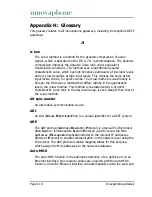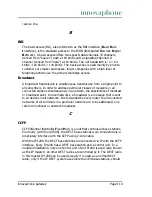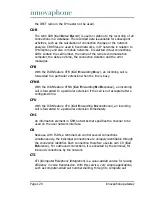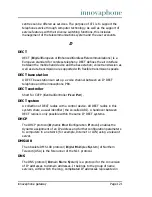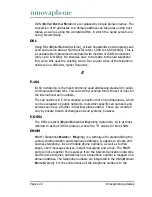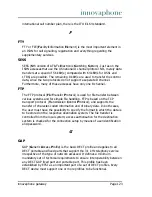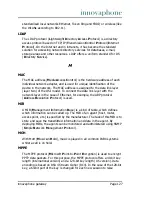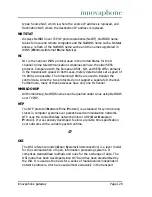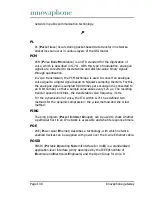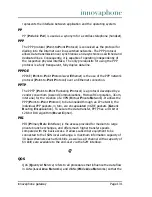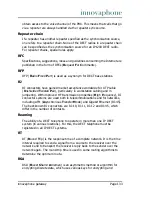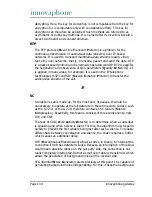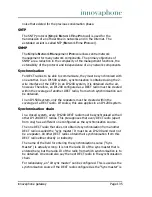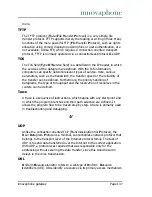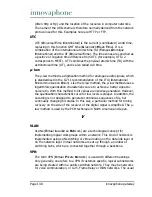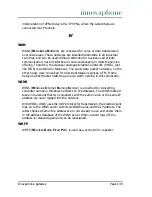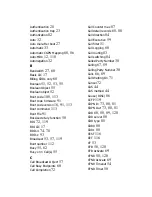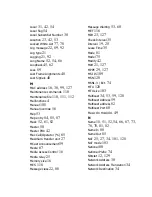
Page 132
innovaphone gateway
service arrives at the receiver with a defined quality.
QSIG
QSIG (
Q
Interface
Sig
nalling Protocol) is based on the D channel protocol
according to the ITU-T standard (
I
nternational
T
elecommunication
U
nion-
T
elecommunications) of the Q.93x series for basic call and of the Q.95x
series for the supplementary services. This ensures that QSIG and ISDN are
compatible in their features, and that ISDN applications or supplementary
services of the public ISDN networks can also be used in a private network.
Q value
An indicator for the transmission quality in a DECT call set up. Also referred
to as Q52 value.
Q.931
Q.931 is the protocol standardised by the ITU (
I
nternational
T
elecommunication
U
nion) for the signalling in the D channel of Euro ISDN.
It is used for the connection setup and shutdown, as well as for connection
control.
R
Radio
A DECT radio is either a DECT base station or a repeater.
RC4
The encryption algorithm RC4 (
R
ivest
C
ipher) is a symmetric encryption
method, in which the key is generated by a random number generator. RC4
works with a secret key that is know to the sender and receiver. The variable
key length can be up to 2,048 bits. Each character is individually encrypted.
Despite being relatively simple, RC4 is regarded as very secure.
Repeater
A DECT radio with no direct connection to the CCFP. It requires access
(either direct or indirect) to a DECT base station, which provides a channel
to the PBX. A repeater increases the coverage area of the IP DECT system,
but not the maximum possible number of calls made simultaneously.
A repeater requires a synchronisation source (just like every other DECT
radio). The DECT radio used as the synchronisation chain is likewise used to

